Chrysanthemum Profile
Written by admin
Oct 16 2021
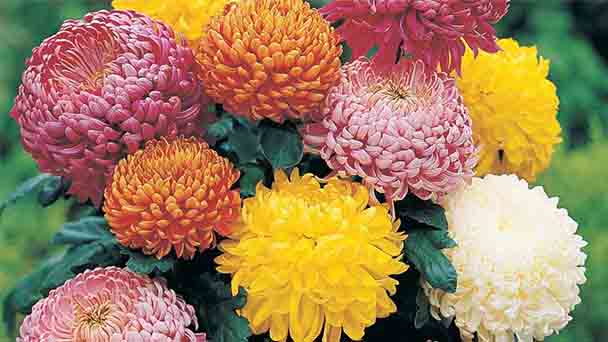
Chrysanthemum is a perennial herb of Compositae and Chrysanthemum in plant taxonomy. According to the cultivation form, it is divided into a multi-head chrysanthemum, single chrysanthemum, dahlia chrysanthemum, cliff chrysanthemum, art chrysanthemum, table chrysanthemum, and other cultivation types; according to the appearance of petals, it is divided into a garden hug, retreat hug, anti hug, chaotic hug, and open heart Cultivation types such as Huo, Feiwu Huo, etc. The different types of chrysanthemums are named various varieties.
Chrysanthemum is a precious ornamental flower cultivated by long-term artificial selection. Around the 8th century, chrysanthemums were passed from China to Japan as ornamental. At the end of the 17th century, Dutch merchants introduced Chinese chrysanthemums to Europe. It was introduced to France in the 18th century and North America in the mid-19th century. Since then, the Chinese chrysanthemum has spread all over the world.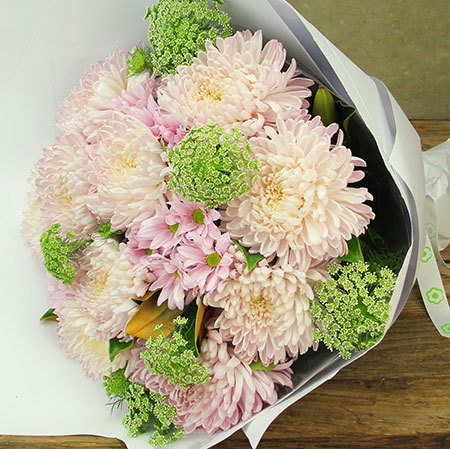 Chrysanthemum is a perennial herb, 60-150 cm high. Stems erect, branched or unbranched, pilose. The leaves of chrysanthemum are alternate, with short stalks. The leaves are ovate to lanceolate, 5-15 cm long, pinnately lobed or semi-cleft, with a wedge-shaped base, white pubescent underneath, with thick serrations or deep lobes at the base . The leaves are edge-shaped, with a handle. The flower heads are solitary or clustered at the top of the stem and branch, 2.5-20 cm in diameter, with different sizes, and single or clustered at the top of the stem and branch. Chrysanthemums vary greatly due to different varieties. The involucre is multi-layered, the outer layer is green, strip-shaped, the margin is membranous, and the outside is pilose; the tongue-like flowers are white, red, purple, or yellow. The flower colors are red, yellow, white, orange, purple, pink, dark red, and other colors. There are a lot of cultivated varieties. The heads are varied, and the shapes and colors are different. The shapes are single, flat, and spoon petals depending on the variety. There are many other types, among which are tubular flowers, which are often all specialized into various tongue-shaped flowers; the flowering period of chrysanthemums is from September to November.
Chrysanthemum is a perennial herb, 60-150 cm high. Stems erect, branched or unbranched, pilose. The leaves of chrysanthemum are alternate, with short stalks. The leaves are ovate to lanceolate, 5-15 cm long, pinnately lobed or semi-cleft, with a wedge-shaped base, white pubescent underneath, with thick serrations or deep lobes at the base . The leaves are edge-shaped, with a handle. The flower heads are solitary or clustered at the top of the stem and branch, 2.5-20 cm in diameter, with different sizes, and single or clustered at the top of the stem and branch. Chrysanthemums vary greatly due to different varieties. The involucre is multi-layered, the outer layer is green, strip-shaped, the margin is membranous, and the outside is pilose; the tongue-like flowers are white, red, purple, or yellow. The flower colors are red, yellow, white, orange, purple, pink, dark red, and other colors. There are a lot of cultivated varieties. The heads are varied, and the shapes and colors are different. The shapes are single, flat, and spoon petals depending on the variety. There are many other types, among which are tubular flowers, which are often all specialized into various tongue-shaped flowers; the flowering period of chrysanthemums is from September to November.
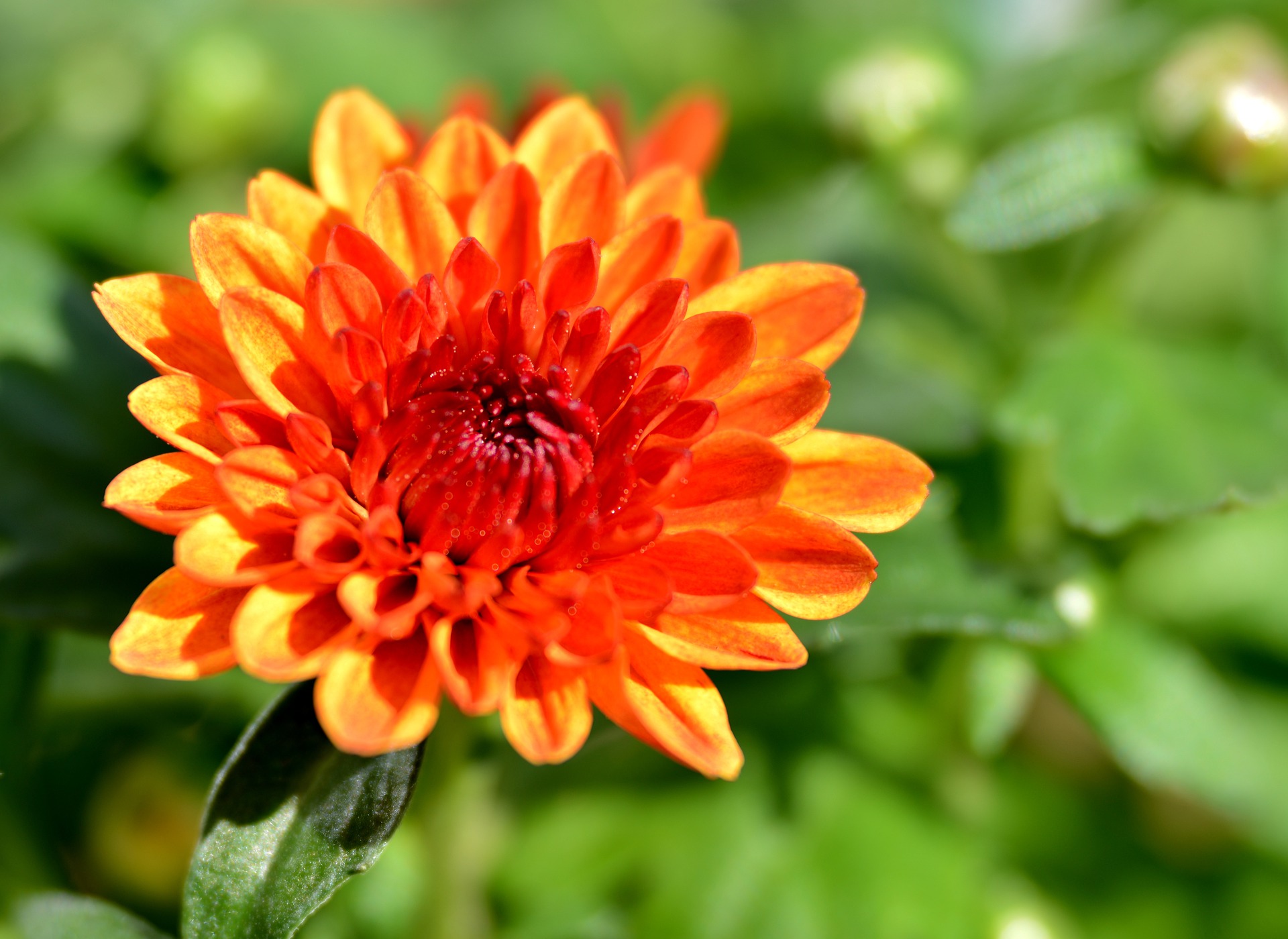 Chrysanthemum is a short-day plant, which can bloom early under short-day sunlight. Like sunshine, avoid shade, more tolerant of drought, and fear of flooding. Like a warm and humid climate, but also resistant to cold, the rhizomes can survive the winter underground in severe winter. The flowers can withstand slight frost, but higher temperatures are required for seedling growth and branching and budding. The optimum growth temperature is about 20°C.
Chrysanthemum is a short-day plant, which can bloom early under short-day sunlight. Like sunshine, avoid shade, more tolerant of drought, and fear of flooding. Like a warm and humid climate, but also resistant to cold, the rhizomes can survive the winter underground in severe winter. The flowers can withstand slight frost, but higher temperatures are required for seedling growth and branching and budding. The optimum growth temperature is about 20°C.
Chrysanthemum has strong adaptability, likes coolness, and is relatively cold-resistant. The suitable growth temperature is 18-21℃, the highest is 32℃, and the lowest is 10℃. The low-temperature resistance limit of underground rhizomes is generally -10℃. The minimum night temperature of the chrysanthemum during the flowering period is 17℃, and the flowering period can be reduced to 15-13℃. Like the full sun, but also slightly tolerant. It is more resistant to dryness and avoids waterlogging. It is a sandy loam with high dry terrain, deep soil, rich in humus, easy fertile, and good drainage. Chrysanthemum can grow in slightly acidic to neutral soil.
Chrysanthemums are found in cities and villages in China, especially in Beijing, Nanjing, Shanghai, Hangzhou, Qingdao, Tianjin, Kaifeng, Wuhan, Chengdu, Changsha, Xiangtan, Xi'an, Shenyang, Guangzhou, Xiaolan Town, Zhongshan City, etc. Around the 8th century, the chrysanthemum was passed from China to Japan as an ornamental, and it was praised as a pattern of the Japanese national emblem. Dutch merchants introduced the Chinese chrysanthemum to Europe at the end of the 17th century, France in the 18th century, and North America in the mid-19th century. Since then, the Chinese chrysanthemum has spread all over the world.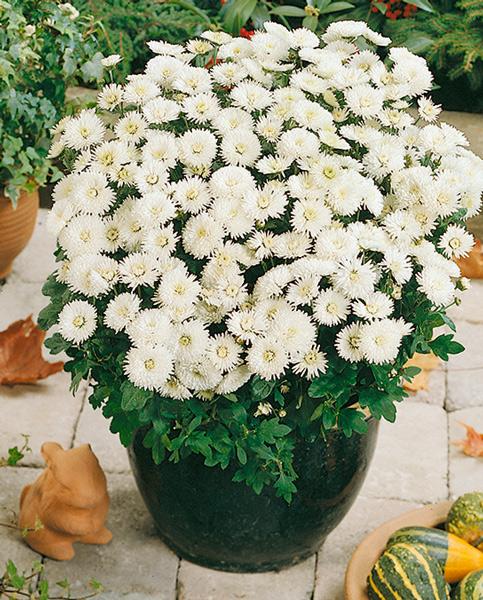 Chrysanthemum appreciation has always been a long-standing habit among Chinese people. From the ancient palaces of the emperors, officials, and common people in Kyoto to the people in various cities in China today, chrysanthemum fairs, chrysanthemum exhibitions, and chrysanthemum styles are held in autumn every year. Various forms of chrysanthemum appreciation activities.
Chrysanthemum appreciation has always been a long-standing habit among Chinese people. From the ancient palaces of the emperors, officials, and common people in Kyoto to the people in various cities in China today, chrysanthemum fairs, chrysanthemum exhibitions, and chrysanthemum styles are held in autumn every year. Various forms of chrysanthemum appreciation activities.
The chrysanthemum grows vigorously and has a strong germination force. A single chrysanthemum can produce thousands of flower buds after repeated tapping. Some varieties have soft and many branches, which are convenient for making various shapes, forming a chrysanthemum tower, chrysanthemum bridge, chrysanthemum fence, chrysanthemum pavilion, and chrysanthemum Exquisite shapes such as gate and chrysanthemum. It can also be cultivated into large standing chrysanthemums, cliff chrysanthemums, assorted brocades, bonsais, etc., with various forms and wonders, adding countless ornamental artworks to the annual chrysanthemum exhibition.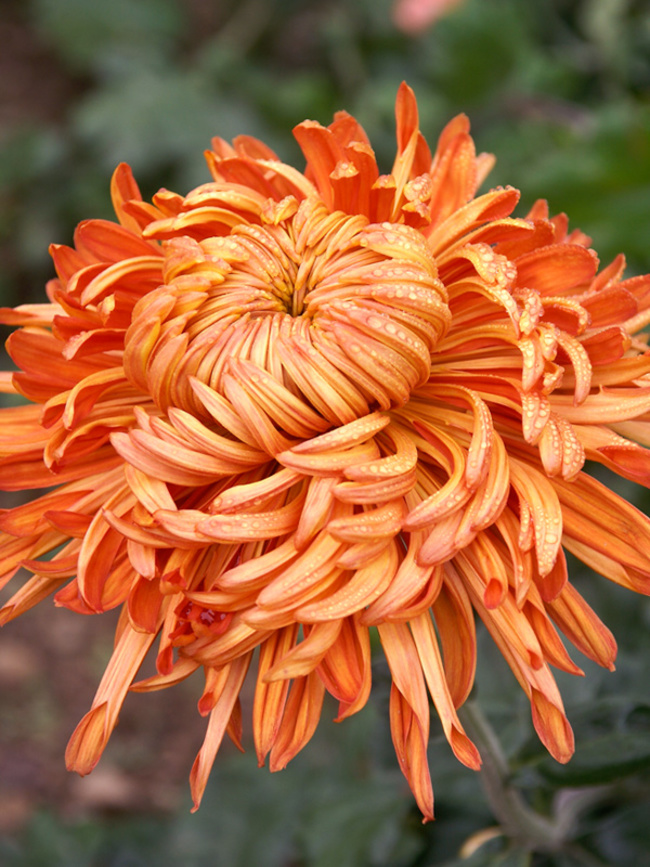 In autumn and winter, cut the outer stem of the plant. The criterion for selecting buds is that they are far from the plant and have full buds. After the buds are selected, it’s a good choice to peel off the lower leaves and insert them in the coarse sand of flowerpots or planting beds in the greenhouse or greenhouse according to the plant spacing of 3-4 cm and the row spacing of 4-5 cm. Keep the temperature at 7-8c, and plant them outdoors after the spring is warm. Twig cutting: This method is the most widely used. Cuttings more than 4-5 months. Youo’ better cut the tender technique 8-10 cm as cuttings, and manage them after cutting. At the temperature of 18-210C, most varieties take root in about 3 weeks, and the seedlings can be transferred to pots in about 4 weeks.
In autumn and winter, cut the outer stem of the plant. The criterion for selecting buds is that they are far from the plant and have full buds. After the buds are selected, it’s a good choice to peel off the lower leaves and insert them in the coarse sand of flowerpots or planting beds in the greenhouse or greenhouse according to the plant spacing of 3-4 cm and the row spacing of 4-5 cm. Keep the temperature at 7-8c, and plant them outdoors after the spring is warm. Twig cutting: This method is the most widely used. Cuttings more than 4-5 months. Youo’ better cut the tender technique 8-10 cm as cuttings, and manage them after cutting. At the temperature of 18-210C, most varieties take root in about 3 weeks, and the seedlings can be transferred to pots in about 4 weeks.
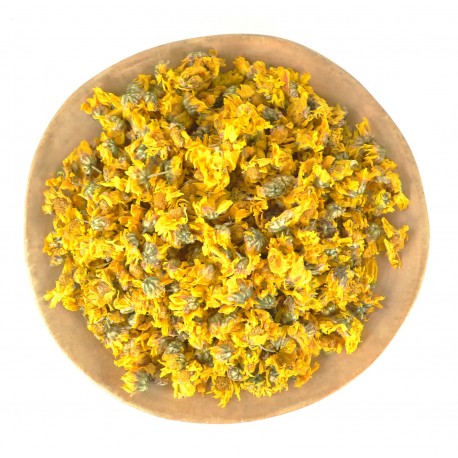 Leaf bud cutting: Cut a leaf with axillary buds from the branch and insert it. This method is only used for breeding rare species.
Leaf bud cutting: Cut a leaf with axillary buds from the branch and insert it. This method is only used for breeding rare species.
Rectified plants: Generally, the plants are excavated before and after the Qingming Festival, separated according to the natural shape of the roots, and planted in another pot.
Chrysanthemum is a precious ornamental flower cultivated by long-term artificial selection. Around the 8th century, chrysanthemums were passed from China to Japan as ornamental. At the end of the 17th century, Dutch merchants introduced Chinese chrysanthemums to Europe. It was introduced to France in the 18th century and North America in the mid-19th century. Since then, the Chinese chrysanthemum has spread all over the world.
Chrysanthemum morphological characteristicsChrysanthemum growth habit and growing environment and distributionChrysanthemum efficacy and roleChrysanthemum PropagationBud cuttingGround plugSeeding
Chrysanthemum morphological characteristics

Chrysanthemum growth habit and growing environment and distribution

Chrysanthemum has strong adaptability, likes coolness, and is relatively cold-resistant. The suitable growth temperature is 18-21℃, the highest is 32℃, and the lowest is 10℃. The low-temperature resistance limit of underground rhizomes is generally -10℃. The minimum night temperature of the chrysanthemum during the flowering period is 17℃, and the flowering period can be reduced to 15-13℃. Like the full sun, but also slightly tolerant. It is more resistant to dryness and avoids waterlogging. It is a sandy loam with high dry terrain, deep soil, rich in humus, easy fertile, and good drainage. Chrysanthemum can grow in slightly acidic to neutral soil.
Chrysanthemums are found in cities and villages in China, especially in Beijing, Nanjing, Shanghai, Hangzhou, Qingdao, Tianjin, Kaifeng, Wuhan, Chengdu, Changsha, Xiangtan, Xi'an, Shenyang, Guangzhou, Xiaolan Town, Zhongshan City, etc. Around the 8th century, the chrysanthemum was passed from China to Japan as an ornamental, and it was praised as a pattern of the Japanese national emblem. Dutch merchants introduced the Chinese chrysanthemum to Europe at the end of the 17th century, France in the 18th century, and North America in the mid-19th century. Since then, the Chinese chrysanthemum has spread all over the world.
Chrysanthemum efficacy and role

The chrysanthemum grows vigorously and has a strong germination force. A single chrysanthemum can produce thousands of flower buds after repeated tapping. Some varieties have soft and many branches, which are convenient for making various shapes, forming a chrysanthemum tower, chrysanthemum bridge, chrysanthemum fence, chrysanthemum pavilion, and chrysanthemum Exquisite shapes such as gate and chrysanthemum. It can also be cultivated into large standing chrysanthemums, cliff chrysanthemums, assorted brocades, bonsais, etc., with various forms and wonders, adding countless ornamental artworks to the annual chrysanthemum exhibition.
Chrysanthemum Propagation
There are methods of Chrysanthemum propagation. Vegetative propagation includes rod cutting, ramification, grafting, layering, and tissue culture. It is usually based on cutting propagation, which is divided into bud cutting, twig cutting, and leaf bud cutting.Bud cutting

Ground plug
The medium can be garden soil with 1/3 of the hull ash. Yoou’d better set up a reed canopy on the high bed for shade. Full-light slotted bed, if there is automatic spray equipment, no shade is needed.
Rectified plants: Generally, the plants are excavated before and after the Qingming Festival, separated according to the natural shape of the roots, and planted in another pot.
Seeding
Chrysanthemum seeds germinate slowly above 10 degrees Celsius, with a suitable temperature of 250C. Sparsely sown between February and April, under normal circumstances, it can bloom more in that year.Latest Updated
- Benefits of Bugleweed - 7 Science-backed Health Benefits
- Bugleweed Dangers & Side Effects - Is It Poisonous?
- How to Plant Evergreen Trees - What You Should Know
- When to Plant Evergreens - Grow Guide for Evergreen Trees
- 12 Wonderful Evergreen Shrubs for Your Garden
- 12 Popular Evergreen Plants with Pictures for Beginners
- When And How To Prune A Lilac Bush Like a Pro
- How to Grow & Care for Lilac Vine (Hardenbergia Violacea)
- Japanese Lilac Tree (Syringa Reticulata) Care & Propagation Guide
- Shumard Oak Pros and Cons - What to Know
Popular Articles
- Winter maintenance of Antirrhinum Majus
- How to Grow Terminalia Mantaly Tree
- How to Grow and Care for Crossostephium Chinense
- How to grow Antirrhinum Majus in spring
- Peristeria Elata (Dove Orchid) Profile: Info & Care Guide
- Underwatered Snake Plant (Sansevieria Trifasciata) - Signs And How To Fix
- How to Care for Brazilian Jasmine Plant (Mandevilla Sanderi)
- How to Grow & Care for Graptopetalum Purple Delight in Summer
- Rosa Chinensis (China Rose): Plant Growing & Care Tips
- How to Care for Baby Sun Rose (Aptenia Cordifolia)